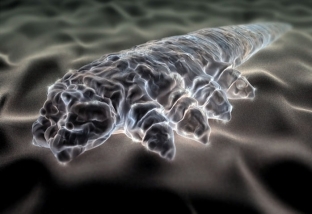Medical statistics state that rosacea, or rosacea, is almost always to some extent inherent in fair-haired women with the first and second type photosensitivity. Almost half of the inhabitants of the Scandinavian countries and northern peoples suffer from this disease.
Often, with exacerbation of rosacea, those who have spent their holidays skiing and have not paid enough attention to protecting the skin from insolation, prickly air and other factors that contribute to vasodilation turn to a dermatologist. It is the vulnerability of the vascular walls that becomes the main cause of the development of rosacea.
The disease can be triggered by various factors, but for any of them it is very important to start treatment as soon as possible.
Why rosacea appears and who is at risk
At the basis of the development of rosacea are various factors that, in combination, can provoke the disease. In addition to the genetic predisposition, which is especially high in fair-skinned people, such problems as pathologies of the vascular walls, diseases of the gastrointestinal tract, and neuroendocrine pathologies are of great importance. The provocative reasons for which rosacea appear & nbsp; for the first time or escalate, act out:
- frequent hard peels, including chemical peels;
- tanning beds, excessive overheating and hypothermia;
- long-term use of corticosteroids;
- smoking, stress;
- passion for spicy and spicy food.
Rosa acne can develop against the background of contact dermatitis. The symptoms of the disease are often exacerbated by demodecosis, but mites are not the cause of the disease, but harsh therapy for this infection enhances the manifestation of rosacea.

How does rosacea develop in different stages
It is possible to assume the risk of developing rosacea in situations where the patient feels sudden flushes of heat to the skin on the face in response to completely insignificant stimuli that in other people do not cause any reaction at all. The sensation is accompanied by a bright blush on the cheeks, on the forehead, on the chin, and the blush spots are clearly defined, delimited from healthy skin. In addition, even very small doses of drunk alcohol cause a persistent vascular network on the cheeks, in the nose area.
The first stage of the development of the disease is already characterized by persistent erythema without the influence of external irritating factors, telangiectasias appear, and skin oiliness increases. Often at this stage, patients begin to use aggressive cosmetics against oily skin. As a result of such exposure, the skin begins to peel off, dehydrated, and sebum is released even more.
Further, at the second stage of development of rosacea, small pustules and papular elements appear on the skin. And if the patient does not receive adequate treatment, then the disease develops to the formation of subcutaneous nodes and dense infiltrates, the third stage is characterized by saturated erythema, a large number of papules and pustules, a pronounced vascular network in the area of the wings of the nose and chin.
Acne rosacea has an undulating course, and if treatment is ineffective or absent at all, then the periods of remission in this disease become shorter, the skin on the entire face thickens, looks swollen and very inflamed.
Treatment of rosacea and ways to prevent complications
Treatment of rosacea is most effective at the very first stages, and if therapy is started as early as possible, it is quite possible to achieve such a result when there will be no noticeable changes in the skin at all. Treatment in the early stages involves taking drugs that strengthen the vascular walls, as well as sedatives that reduce excitability and prevent vasodilation, thereby relieving the symptoms of rosacea.
It should be noted that if at this stage demodex is found in the patient, then it is worth refraining from treating it, since it will worsen the skin condition – when sebum production returns to normal, demodicosis will go away by itself.
In the later stages of rosacea, topical anti-inflammatory and, if indicated, antibacterial drugs are used, corticosteroid ointments may be used (unless the disease is provoked by drugs of this group).
After stopping the inflammatory process, laser coagulation of the vascular network has a good therapeutic effect – as the main reason for the activation of rosacea. It is impossible to completely cure rosacea, but early treatment can help achieve a stable remission and prevent the appearance of scars and scars at the site of inflammatory elements.
Patients at risk should be aware that rosacea can be prevented by adjusting their lifestyle: avoid overheating, hypothermia, insolation, active running sports, as well as follow a diet and carefully care for the skin on the recommendation of a beautician.







Add a comment